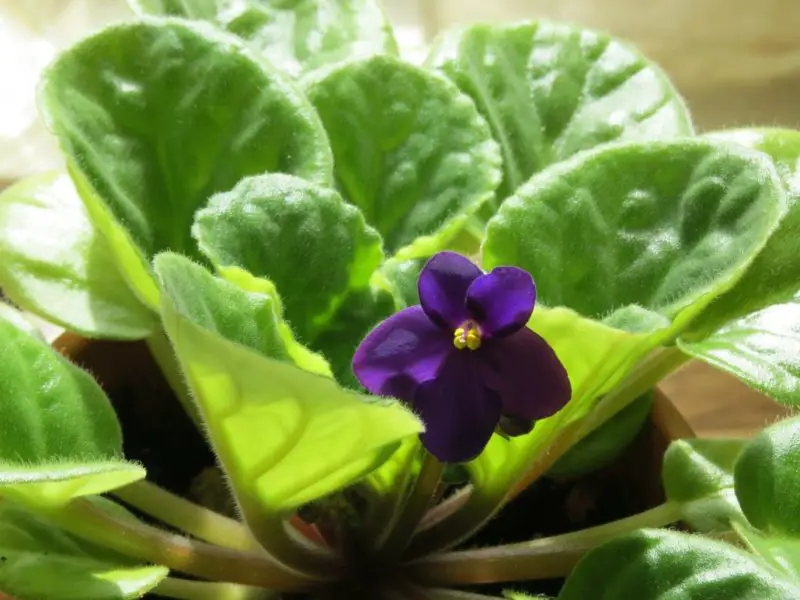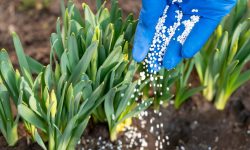African violets are treasured houseplants, admired for their soft, velvety blooms and neat, compact growth. However, many indoor gardeners face a common frustration: healthy-looking African violets that refuse to bloom. If you have been nurturing your plant for months and still no flowers appear, you are not alone. Understanding the reasons behind this issue is crucial to helping your plant thrive.
In this detailed guide, you will learn why your African violets are not blooming and how to fix the problem quickly. By making a few key adjustments to their care, you can encourage lush foliage and frequent, colorful blooms throughout the year.
Understanding African Violet Blooming Habits

African violets are native to tropical East Africa, where they grow in shaded, humid conditions. Their natural environment is stable, with indirect light, mild temperatures, and consistent moisture levels. When grown indoors, these plants can bloom almost continuously under ideal conditions.
The flowers typically appear in clusters, with shades of purple, blue, white, or pink. However, if any element of their care—light, water, nutrients, or humidity—is not properly balanced, the plant will prioritize leaf growth over flowering. Knowing their blooming habits helps you replicate their natural conditions and solve any problems preventing blossoms.
Light: The Most Common Reason for Lack of Blooms
How Light Affects Flowering
Light is the primary trigger for African violet blooms. Insufficient light causes weak, leggy growth and prevents the plant from producing buds. On the other hand, too much direct sunlight can scorch the leaves and stress the plant, making flowering nearly impossible.
African violets thrive in bright, indirect light. In their native habitat, they grow under tree canopies where sunlight is filtered through leaves. If your plant is in a dim corner or far from a window, it will produce lush foliage but no flowers.
Fixing Light Problems Quickly
Place your African violets near an east- or north-facing window where they receive bright but gentle light for about 10 to 12 hours daily. If natural light is limited, consider using fluorescent or LED grow lights designed for indoor plants. Position the lights about 12 inches above the plant for optimal growth and encourage bud formation. Adjusting the lighting often results in visible buds within a few weeks.
Watering Issues That Prevent Flowering
Overwatering and Root Problems
African violets are sensitive to overwatering, which can lead to root rot and stress. When the roots are damaged, the plant will divert its energy to survival instead of blooming. If you notice yellowing leaves, mushy roots, or a soggy potting mix, overwatering is likely the problem.
Underwatering and Drought Stress
Conversely, underwatering can also cause trouble. Dry soil leads to wilted, limp leaves, and the plant goes into survival mode, dropping buds or failing to produce any flowers.
How to Water Correctly
Water your African violets when the top inch of soil feels slightly dry to the touch. Use room-temperature water and water from the bottom whenever possible to avoid splashing the leaves. Let the plant soak up water for 20 to 30 minutes, then discard any excess to prevent soggy roots. Keeping a consistent watering schedule helps encourage steady growth and healthy blooms.
Soil Quality and Potting Conditions
The Importance of Well-Draining Soil
African violets require light, airy, and well-draining soil. Heavy, compacted soil holds too much moisture, suffocating the roots and preventing healthy growth. If your plant has been in the same pot for years, the soil may have compacted, reducing airflow and nutrient absorption.
Repotting to Encourage Flowers
Repotting every 6 to 12 months is essential. Choose a potting mix specifically formulated for African violets or create your own by combining peat moss, perlite, and vermiculite. Use a small pot, as African violets bloom best when slightly root-bound. After repotting, keep the plant in a stable environment and resume normal care to encourage flowering.
Fertilization Mistakes That Affect Blooming
Too Little Fertilizer
If your African violets lack essential nutrients, especially phosphorus, they will produce leaves but no flowers. Nutrient deficiency is common in plants that have been growing in the same pot for months without feeding.
Too Much Fertilizer
Overfertilization, particularly with nitrogen-rich fertilizers, leads to lush, dark green leaves but very few buds. Salt buildup in the soil can also damage the roots, further reducing the chance of flowering.
Using the Right Fertilizer
To promote blooms, use a balanced fertilizer formulated for African violets, with a higher middle number in the NPK ratio (such as 7-9-5). Feed every two to four weeks during the active growing season, and flush the soil occasionally with plain water to prevent salt accumulation.
Temperature and Humidity Problems
Ideal Temperature for Blooms
African violets prefer temperatures between 65°F and 75°F (18°C to 24°C). If the plant is exposed to drafts, sudden temperature changes, or extremes of heat and cold, it will stop producing flowers.
The Role of Humidity
These tropical plants also love moderate humidity levels around 50 to 60 percent. Very dry air can cause bud drop or prevent new flower formation, especially in winter when indoor heating lowers humidity.
Creating the Right Environment
Place the plant in a stable room with consistent temperatures and away from cold windows, air conditioners, or heaters. If the air is too dry, use a humidity tray or a small humidifier nearby to maintain optimal moisture levels in the air.
Grooming and Leaf Maintenance
Removing Spent Flowers
Dead or dying flowers should be removed promptly to encourage new buds. Leaving old blooms on the plant diverts energy away from flower production and can lead to fungal issues.
Pruning Older Leaves
African violets bloom best when they have a balanced number of young, healthy leaves. If older leaves at the base are yellowing or damaged, remove them carefully to allow better airflow and energy distribution to developing buds.
Stress and Environmental Changes
African violets are sensitive to environmental stress. Moving the plant frequently, repotting too often, or exposing it to sudden changes in light and temperature can delay blooming. After any major change, give the plant time to adjust before expecting flowers. Stable conditions are key to encouraging consistent blooming.
Encouraging African Violets to Rebloom Quickly
Once you correct the issues preventing flowering, African violets can bloom almost continuously. Providing proper light, balanced watering, nutrient-rich soil, and stable humidity will help your plant produce multiple flushes of flowers each year. Some varieties can even bloom for ten months straight under ideal conditions.
Be patient, as it may take a few weeks to see buds after making care adjustments. Continue monitoring the plant closely and avoid drastic changes to ensure long-lasting results.
Frequently Asked Questions
How long does it take for African violets to bloom after correcting care?
Most African violets start showing buds within four to eight weeks after adjustments. Consistent care speeds up the process.
Should I remove all leaves to encourage flowering?
No, removing too many leaves can harm the plant. Only remove damaged or old leaves, leaving enough healthy foliage for photosynthesis.
Can African violets bloom all year indoors?
Yes, under proper conditions with stable light, temperature, and fertilization, they can bloom nearly year-round.
Why are my African violet leaves healthy but no flowers appear?
This usually indicates insufficient light or too much nitrogen fertilizer, both of which encourage leaf growth over flower production.
Do African violets need dormancy to bloom again?
No, African violets do not have a true dormancy period. With proper care, they can continuously produce flowers.
Final Thoughts
African violets are not difficult to bloom once you understand their needs. The key lies in balancing light, water, nutrients, and environmental conditions to mimic their natural habitat. By addressing common issues like poor lighting, incorrect watering, and nutrient imbalances, you can quickly encourage your plant to produce its signature vibrant flowers. With patience and consistent care, your African violets will reward you with spectacular blooms for months on end.







What are your thoughts on African violet pots – one holds the water while the violet is planted in the other – with a porous pot to absorb moisture as needed?
Hi Theresa,
That’s actually a very thoughtful question — and a great one for anyone who enjoys growing moisture-sensitive plants like African violets.
African violet pots — the type with a double design (an inner porous pot sitting inside a water-filled outer pot) — are highly effective for maintaining consistent soil moisture. The porous inner pot, usually made of unglazed clay, allows water to slowly wick through from the outer reservoir, ensuring that the plant’s roots never sit directly in water. This method mimics natural capillary action, preventing both overwatering and underwatering, which are common problems for African violets and other bulbous plants.
Overall, these self-watering double pots are an excellent choice if you want low-maintenance, healthy plants with optimal hydration. They’re especially convenient for growers in warm or dry environments, or for anyone who tends to forget regular watering.
Hope this answer give you some useful info.